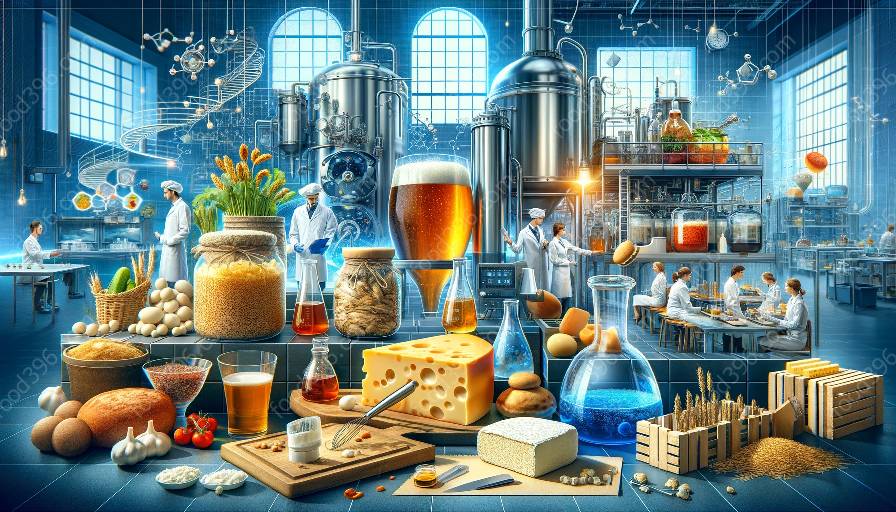Fermentation is a time-honored method of food preservation that has been practiced for thousands of years. It is a natural biological process that harnesses the power of microorganisms to transform and preserve food and drink. This topic cluster will provide a comprehensive exploration of fermentation science, its impact on food and drink, and its role in preserving various food items.
The Science of Fermentation
Fermentation is a biochemical process that occurs when microorganisms, such as bacteria, yeast, or fungi, break down complex organic compounds in the absence of oxygen. This process produces byproducts such as organic acids, alcohols, and gases, which impart unique flavors and textures to the fermented products.
Role of Microorganisms
The key players in fermentation are the microorganisms, which can be either wild or domesticated strains. These microorganisms consume sugars and other nutrients present in the food, leading to the production of compounds that preserve the food and contribute to its sensory qualities.
Fermentation Science
In the field of fermentation science, researchers study the metabolic activities of microorganisms during fermentation, as well as the enzymatic and biochemical reactions involved in the process. They also explore the influence of factors such as temperature, pH, and oxygen levels on the fermentation outcome.
Impact on Food and Drink
Fermentation has a profound impact on the creation of various food and drink items. It is widely used in the production of bread, cheese, yogurt, beer, wine, sauerkraut, kimchi, and many other fermented foods and beverages. The transformative power of fermentation enhances the flavors, textures, and nutritional profiles of these products.
Flavor Development
During fermentation, microorganisms produce a diverse array of flavor compounds, including acids, esters, and aldehydes, which contribute to the characteristic taste and aroma of fermented foods and beverages. These flavor compounds are often responsible for the tangy, savory, or complex flavors associated with fermented products.
Food Preservation
Fermentation inhibits the growth of harmful bacteria by creating an acidic or alcoholic environment that is unfavorable for the survival of spoilage and pathogenic microorganisms. This natural preservation method extends the shelf life of food and reduces the risk of foodborne illnesses.
Nutritional Enrichment
Fermentation can increase the nutritional value of foods by enhancing their digestibility and bioavailability. For example, fermentation can break down complex carbohydrates and proteins into simpler forms, making them easier for the body to absorb. Furthermore, certain vitamins and minerals may become more concentrated in fermented products.
Fermentation in Food Preservation
One of the primary purposes of fermentation is food preservation. Throughout history, fermentation has been utilized as a means of prolonging the shelf life of perishable foods, allowing communities to store and consume seasonal produce year-round. Fermented foods are celebrated for their unique flavors and their ability to withstand extended storage periods without refrigeration.
Cultural Significance
Fermented foods and beverages are deeply rooted in various cultures around the world. Each culture has its own traditional fermented foods, which reflect local ingredients, customs, and culinary practices. Fermentation plays a crucial role in preserving cultural heritage and connecting people through shared food traditions.
With its immense impact on food and drink, fermentation continues to be a captivating subject that intersects the fields of science, food preservation, and culinary arts.

